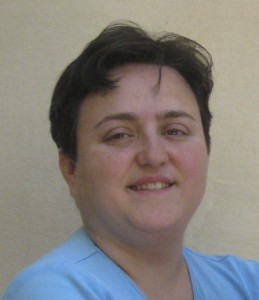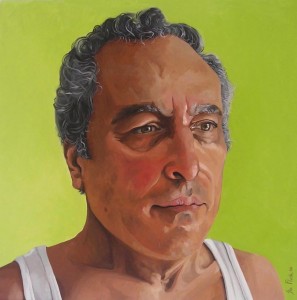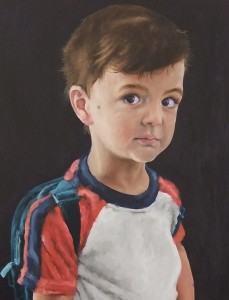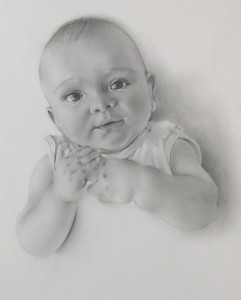-
WHEN A DREAM IS BORN
Sometimes there comes a time when you realize that your life has taken a route which leads to nowhere or at least not to the place where you wish to be. You feel as if you
 are on the wrong train that with great velocity is speeding away from places in which maybe you wished to stop and cherish. You might start thinking about stepping down at the next station or even to jump off the train and escape. But this decision is not as easy as it seems. Because there with you, on that train, there is also a number of luggage made of experiences, memories, acquaintances and securities which are not so easy to leave behind. You need much courage to choose change, for if this train is taking you where you don’t want to be, on another train there would still be no guarantee that you will eventually find happiness. And yet if you really want to arrive in that desired land, actually you have no choice…
are on the wrong train that with great velocity is speeding away from places in which maybe you wished to stop and cherish. You might start thinking about stepping down at the next station or even to jump off the train and escape. But this decision is not as easy as it seems. Because there with you, on that train, there is also a number of luggage made of experiences, memories, acquaintances and securities which are not so easy to leave behind. You need much courage to choose change, for if this train is taking you where you don’t want to be, on another train there would still be no guarantee that you will eventually find happiness. And yet if you really want to arrive in that desired land, actually you have no choice…“I felt as if I was killing myself little by little, drawing just for myself at home,” disclosed with me Sue Flask, the artist whom I interviewed this week.
“Ever since I was a little child I loved to draw. Everywhere you’d find me sketching something or another. And yet I did not consider myself to have any special skill because I thought that anyone could draw just like me.
At that time in primary school we did not have any art lessons. Ironically, once in a while an art teacher would come to our class and choose the boys to give them an art lesson. Likewise a crafts teacher came and provided us girls with a needlework lesson, notwithstanding whether we were interested or not. Only once, in all the primary school years did an art teacher come and give a lesson to all!
Nevertheless my love for art continued to develop, probably because my father was a photographer and I really appreciated his work. When I was about nine years old, during the three months of
 summer, my parents sent me to learn art at the School of Art in Valletta and there I confirmed that I was very passionate about it. Unfortunately, not even at secondary level did our school provide us with any art lessons. And yet I was adamant to gain this skill and so I continued to attend to lessons at the School of Art until finally I sat for the Ordinary Level exam and I obtained a very good result. I was much encouraged by this and I continued to paint incessantly at home. Years passed and I found employment as a clerk with our local government. But after work, I still went to spend a few hours at the School of Art because only there did I ever feel real satisfaction. Ultimately I attended to more exams in which I was awarded a Diploma and an Advanced Level standard.
summer, my parents sent me to learn art at the School of Art in Valletta and there I confirmed that I was very passionate about it. Unfortunately, not even at secondary level did our school provide us with any art lessons. And yet I was adamant to gain this skill and so I continued to attend to lessons at the School of Art until finally I sat for the Ordinary Level exam and I obtained a very good result. I was much encouraged by this and I continued to paint incessantly at home. Years passed and I found employment as a clerk with our local government. But after work, I still went to spend a few hours at the School of Art because only there did I ever feel real satisfaction. Ultimately I attended to more exams in which I was awarded a Diploma and an Advanced Level standard.After six years working as a clerk I was feeling quite suppressed. I was sure that I was capable of doing more than that and I could not imagine myself doing that job forever. I desired heartily to go to university. I had always wished to experience the atmosphere of that place. And yet I was so unsure of what to do because people kept advising me not to take this step. Some warned me that I already had a good job and therefore I needed no change. Others told me that I was too old now to go back to study. A year passed and I did not apply. However the next year, I made up my mind and without telling anyone I applied for a university course in art and I was accepted as a mature student. I couldn’t help trying. After all if I did not succeed in passing the exams I could always go back to my old life.”
But this story ends on a very good note as Sue not only graduated but today, she is an art teacher in a primary school wherein she has the
 opportunity of passing on her skill to many children. I was curious whether the students appreciated the art lesson. Moreover I longed to know whether she could understand if any of her students would one day have success in this sector?
opportunity of passing on her skill to many children. I was curious whether the students appreciated the art lesson. Moreover I longed to know whether she could understand if any of her students would one day have success in this sector?“You do notice a difference between one child and another. There are those who enjoy the art lesson, whereas there others who do not that much. At the same time you find some children who simply adore that time where they have the opportunity to draw. You become also aware of a few children who look promising and yet in reality, you can never say. Because I am conscious that you will find students who will draw an object with precision and great skill, whilst another student might appear as if he’s only splattering colour around when you compare him to them. But look at the art of Jackson Pollock and you will understand what I mean. For after all, it is people who decide what is art or not and a successful artist is that individual who manages to get the appreciation from the public and to sell them his work.”
Is one born an artist or does he become one?
“I believe that an artist is born and not made. According to me a true artist can be identified clearly just as one recognizes the difference between a very good pianist and the genius of Mozart. All the artists dream of being of such a level and yet many know that they will never reach that standard. Personally I strive very hard to enhance the quality of my work. I am a very ambitious person and whenever I come across an artpiece which is better than mine, I will continue to try until I accomplish the same degree of work and possibly even enrich it if I can.”
Sue continued to explain that all the mediums give her a particular satisfaction…
“I have painted various subjects with different materials, including oil paints, acrylic, charcoal, soft pastel and gouache. I have worked on several artworks in black and white in order to harness the skill
 of representing light and shadow, wherein each space required a specific shading. Then when I was satisfied enough, I moved to work with colour. Finally I decided to choose a distinct area and specialize in it. My choice led me to focus on portraits because I feel a great fascination in drawing eyes. The diversity in human faces makes this work very appealing and after I spent a great deal of time painting my children, I moved on to paint also other people. Once again I got hold of myself and tried my luck in telling people that I was doing portraits for commission. Little by little, people came and I started to have some clients.”
of representing light and shadow, wherein each space required a specific shading. Then when I was satisfied enough, I moved to work with colour. Finally I decided to choose a distinct area and specialize in it. My choice led me to focus on portraits because I feel a great fascination in drawing eyes. The diversity in human faces makes this work very appealing and after I spent a great deal of time painting my children, I moved on to paint also other people. Once again I got hold of myself and tried my luck in telling people that I was doing portraits for commission. Little by little, people came and I started to have some clients.”In fact this interview took place after I saw some of Sue’s artworks. Her interpretation of peoples’ features, especially the eyes are very impressive, so much that from afar, they actually look like photos. I asked her to tell me what does she try to project from a face and whether there were any faces which were more difficult to draw than others.
“First of all I try to be very loyal to the resemblance of the person because if you slightly change one feature, you will change a face completely. If you paint a longer nose or bigger eyes, you will in no time find that you have painted a different person altogether. But what is crucial to me is that the eyes of the person come out alive. Indeed that was the secret of my success behind the portrait of Joaaeefoa which shows my daughter playing with a giraffe toy and for which work, last year, I have won an award in a national art competition.
As with regards to difficulty in painting faces, some might insist that an elderly face is the most demanding. Yet in fact the wrinkles of old age will help you to build an interesting face. It is actually the faces of children and babies which are the trickiest since you have to pay great attention not to paint their smooth faces in a plastic way. You need to learn the skill how to develop details and character in such faces.”
Did you ever paint someone who eventually was unhappy with the finished work?
“Yes it does happen sometimes, but rarely. Usually they are persons who have a different perception of the way they look and when they see my interpretation, they believe that the painting does not
 represent them. Nonetheless people are usually very satisfied with my work. I love to watch their reactions when they see their painting for the first time and stop speechless in front of it. These are moments of great personal fulfillment and naturally I feel quite annoyed when someone simply collects a painting and leaves without saying anything.”
represent them. Nonetheless people are usually very satisfied with my work. I love to watch their reactions when they see their painting for the first time and stop speechless in front of it. These are moments of great personal fulfillment and naturally I feel quite annoyed when someone simply collects a painting and leaves without saying anything.”How do you do your paintings? Do you have a model or do you use photos?
“My children are too young to be my models and I have never had someone posing for me either. Therefore I work on photos. Typically I ask for more than one photo because some persons have the tendency of looking quite different from one photo to another. Sometimes it is because of a different light, otherwise it is a change in hairstyle… it is impressive what a difference it makes. Even a person’s skin colour changes. You might think that a person is darker or lighter than he actually is and then you see him in front of you and you’ll realize the distinction.
I would really love to have the opportunity of someone modelling for me because then I’ll be able to get to know my subject better and certainly his true character will come out more in the painting.”
Sue insisted that it is very important to paint a little each day.
“To begin with, if I don’t paint a little I will get really frustrated. In fact my husband spots me immediately when I’m irritated and he’d ask me “hey, didn’t you paint anything today?”. Moreover it is only by practising that one can improve his skill. Without training one ends up doing the same work over and over again without ever seeing any progress.”
Sue was quite successful in a good number of art contests but regretfully she informed me that in this country there is very little opportunity for competition.
“Competition gives you the motivation to produce new work and to assess your quality level with other artists. Competition provides you with the precious feedback of those who judge your work and of
![Giraffe 2009 - Art 12 [March09] Giraffe 2009 - Art 12 [March09]](http://fionavella.com/wp-content/uploads/2011/02/Giraffe-2009-Art-12-March091-248x300.jpg) those who come to see it. It also supplements you with recognition, which we Maltese artists thirst for so much.”
those who come to see it. It also supplements you with recognition, which we Maltese artists thirst for so much.”Was there someone in particular whom she wished to paint?
“Yes. I would like to have the opportunity to paint a well-known person in order to gain some popularity for myself. But at the moment I have no one in mind.”
Sitting next to us, all throughout this interview, was her daughter Kathleen, who apparently has inherited much of her mother’s skill since she didn’t stop drawing for a moment, and very beautifully too!
“I came up with the title Joaaeefoa from a drawing of hers in which she drew a giraffe and spelt its name like that. I see myself in my daughter when I observe her drawing all the time. Surely when she’s older, she’ll be much better than me!”
(Note: This article was originally published in Maltese in the newspaper Torċa of the 6th February 2011)